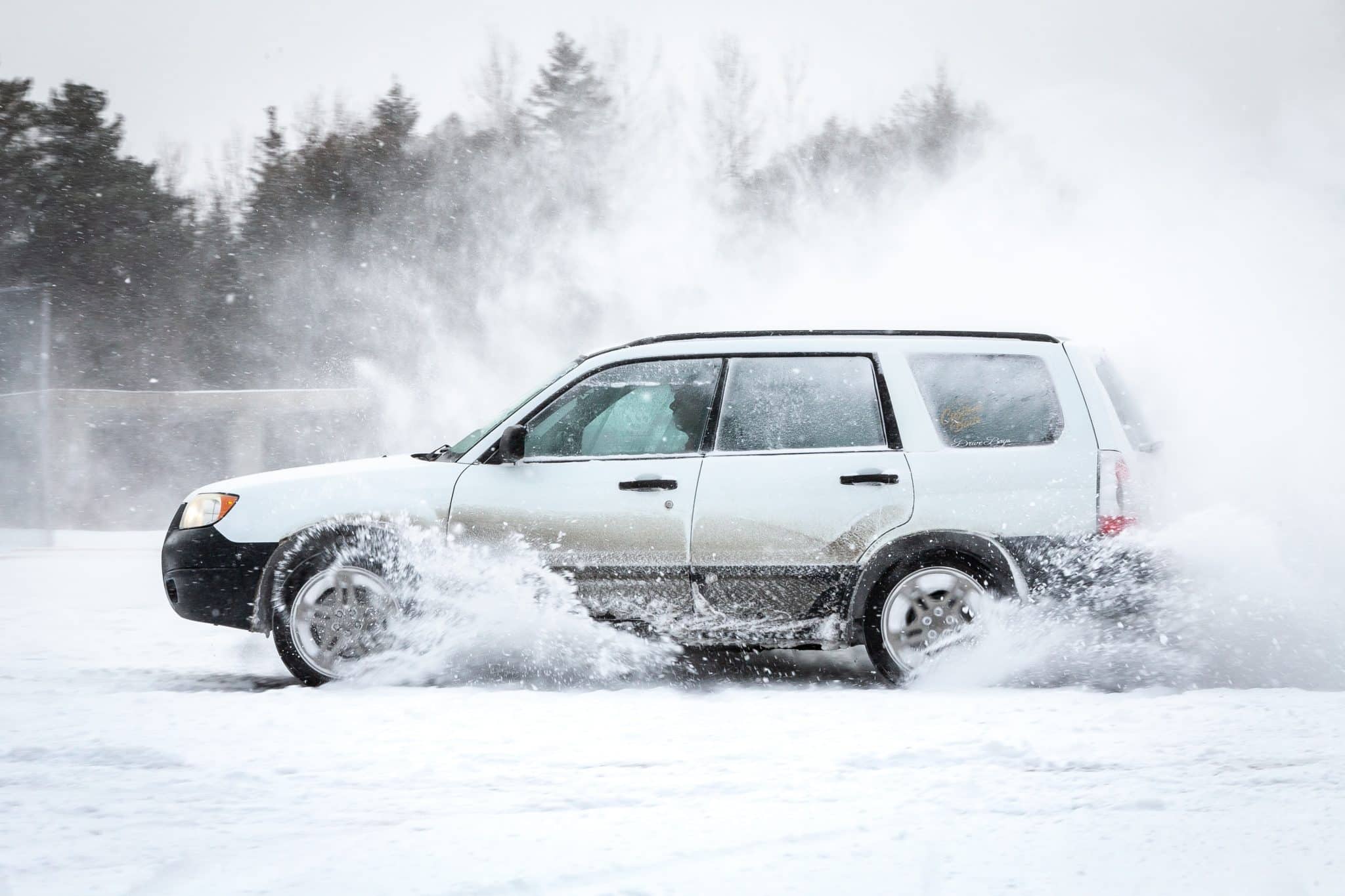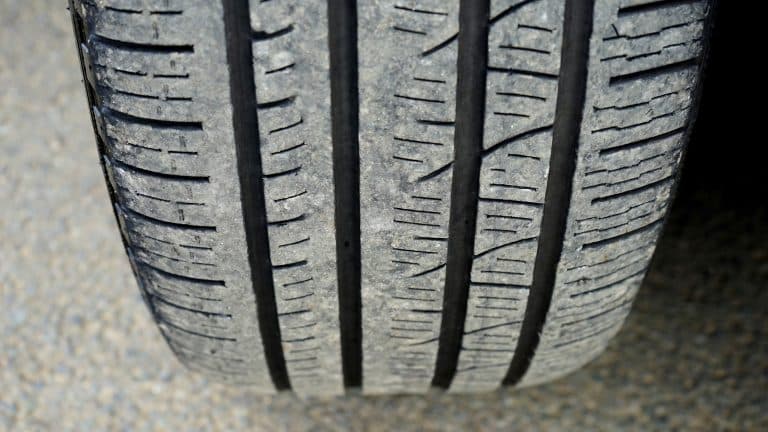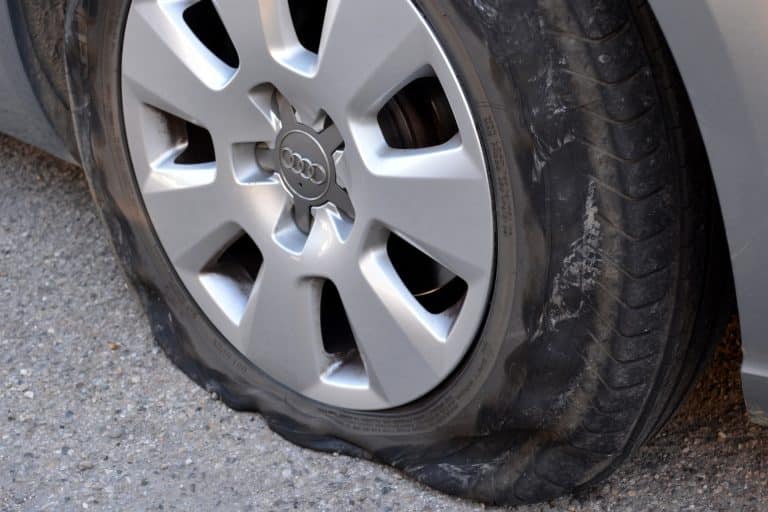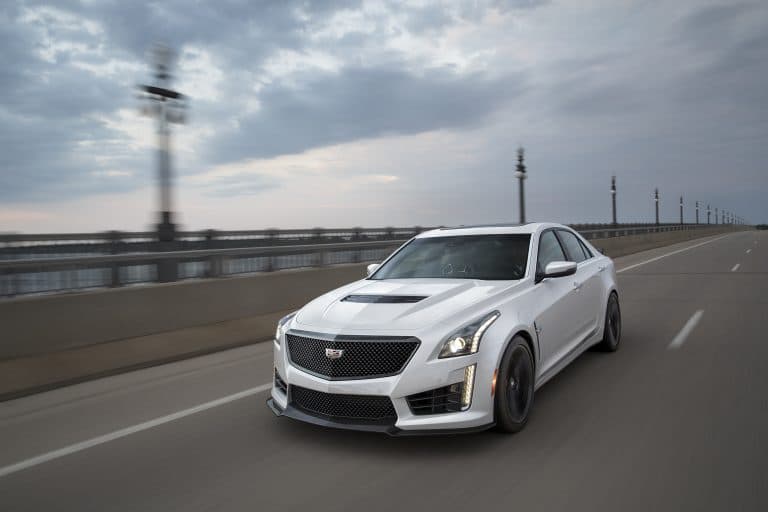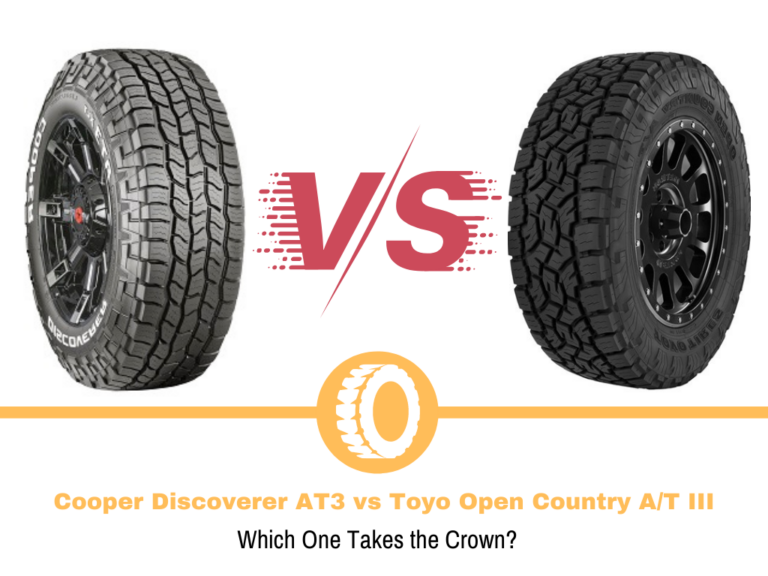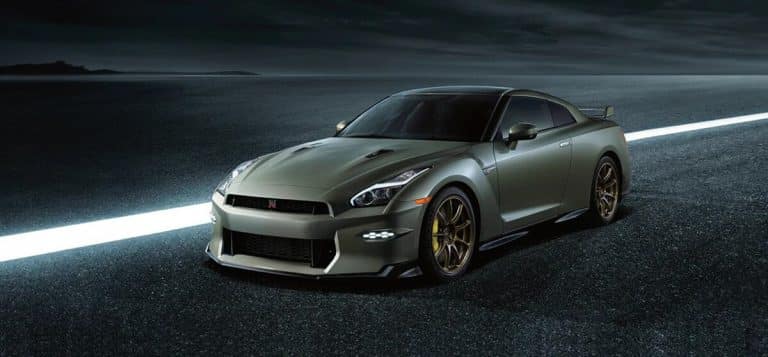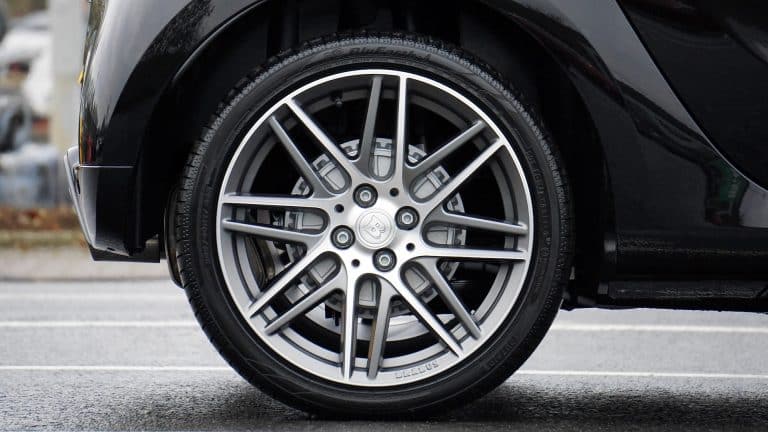Winter Driving Guide
You may think that we’re a bit late with the guide, but considering all the bad weather we’ve been having, I feel like it’s a good time for this. We consider winter conditions the least ideal ones, so knowing how to behave and what you need is essential.
Sure, all of us want to go to an empty snow-covered parking lot and do donuts, but we need to behave on the road. This isn’t just for our safety and the safety of your cars, it’s also for the good of everyone around us.
In these conditions, there are two aspects you need to consider – your driving style and the car with the equipment. To cover all the basics, I’ll talk about both sides and explain what to do and what to consider in these situations.
This guide will apply for anyone, regardless if you’ve accidentally ended up in this situation or you’re living in areas with harsher winter conditions.
Required Equipment for Winter Driving
Before you even start the car, there are a few things you should consider in terms of requirements. If you’ve been following my articles here, you probably know that I’m always recommending the winter and summer tires combination. I know that it’s the more expensive option, but in these situations you’ll know why it’s the better one.
I’m not hating on people that are going for all-season or all-weather tires. They’re decent in lighter conditions, and most people consider them in areas with very mild winters with not a lot of snow. With that said, in harsher conditions, they will struggle.
This means that in winter conditions, you shouldn’t even consider using summer tires. Even if the roads are clear and dry, the compound works best on hot tarmac, something you won’t find in the winter. The tread pattern also doesn’t work well to bite into snow, so you won’t get any traction.
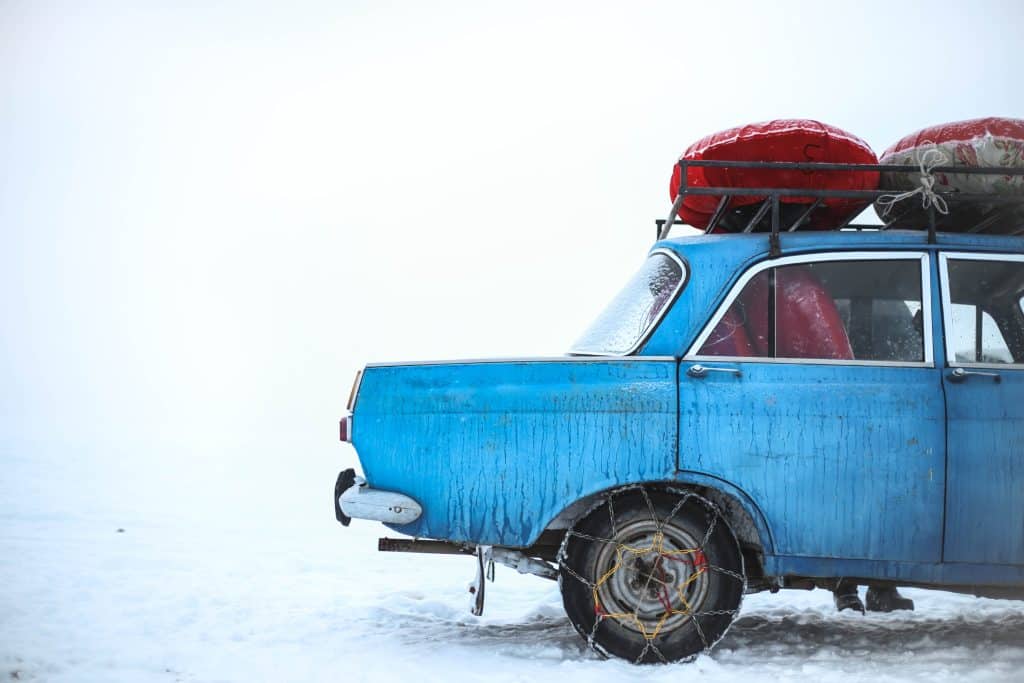
Next up is the additional equipment like snow chains. There are plenty of mountain areas where you’re required by law to have them, regardless of the type of tires you have. In recent years, there are other products that are advertised as equal or better. I did a comparison of snow chains, zip ties and socks and, spoiler alert, I’d recommend the chains.
So, a combination of good winter tires and snow chains should be enough for any situation? Yes, but in most situations. In the most extreme conditions where the snow is very deep, you may need to have a shovel and a traction board. This may seem like overkill, but hear me out.
If you end up stuck in deep snow, the first thing that comes to mind is to mount the chains. That’s a wise option, but if there’s snow all around the tire, you’ll struggle to clear it to get access. This is where the shovel comes in handy. You can clear up the snow in a few minutes and start mounting the chains. The board may also help and the approach is similar to situations where you’re stuck in sand. Dig below the tire and put the boards under the driven wheels pointing in the direction you want to go.
One thing to keep in mind is that traction boards and snow chains don’t mix. I would recommend using the board only to get yourself unstuck and if you have traction issues, mount the chains and continue driving.
How to Decide Which Equipment to Bring?
To decide this, you’ll need to look at where you’re going. If you plan to go on a mountain with high chances of deep snow, the chains are a must and you may bring the shovel. You can consider the traction boards as optional, but may come in handy.
The best way to determine the equipment you’ll need is to check the forecast. That way, you’ll know which conditions you’ll be looking at, and based on that, you’ll know what equipment you should take with you.
Driving Tips for Winter
Whenever you need to drive in winter, there are plenty of aspects you need to be mindful of. Regardless if we’re talking about the equipment or your driving style, you need to be aware of what you’re getting into. I’ll be going over each aspect so that you get a better understanding.
Understanding the conditions
The first thing you should consider is the weather conditions you’ll be driving in. For the sake of this example, let’s say that you’re planning to go somewhere where snow is expected. Check the weather forecast beforehand. No matter if the conditions are mild and harsh, keep them in mind whenever you go on the trip.
Ideally, if you don’t need to travel that day, and the forecast says that the conditions will be harsh, see if you can postpone the trip. In a scenario where you cannot postpone the trip and you have to go, be prepared. When I say prepared, I mean to carry the necessary equipment.
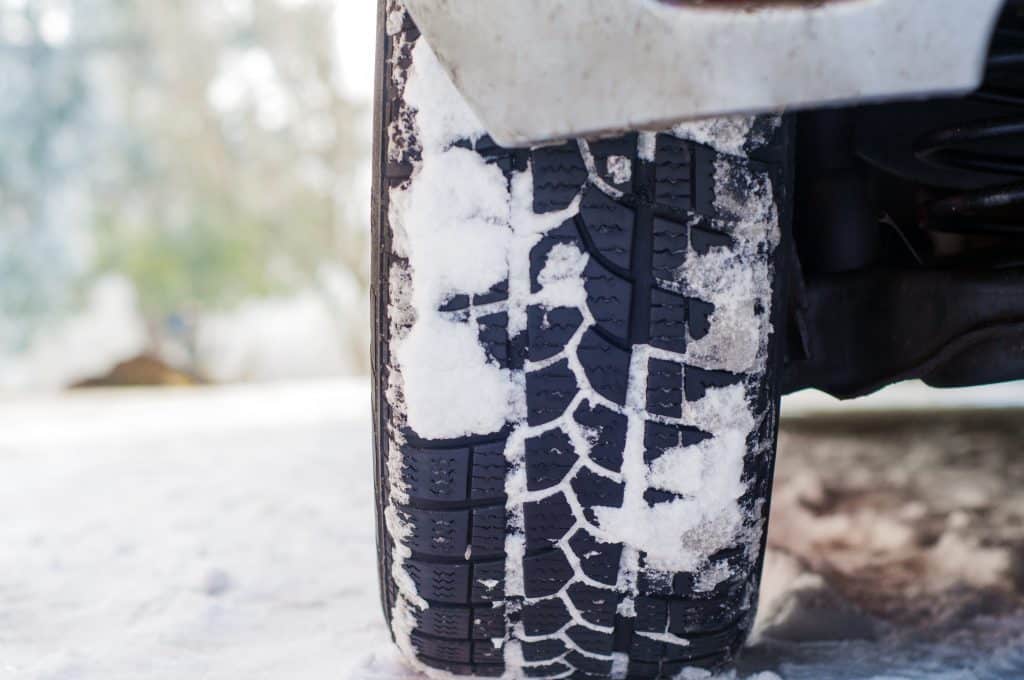
I know a lot of drivers that feel they can tackle any winter conditions with all-season or all-weather tires, but they’re wrong. The best they can do is deal with milder conditions like a few inches of snow and that’s about it. Winter tires are superior, so if you’re planning a trip on a mountain where the chances of snow are high, I’d recommend going for that option. I know it’s an expensive one, but it’s the safer option. Better to get winter tires than risk damaging your car.
It all boils down to the equipment. Regardless of how good the winter tires are, you’ll need to consider getting some of the additional equipment I mentioned in the previous section, especially if you’re expecting harsh conditions.
Driving on Snow
With the preparations aside, let’s talk about how the car behaves and how to adjust your driving style. With the equipment out of the way, let’s talk about some driving tips. As smart as our cars seem to be, they still depend on the inputs from us as drivers, so the overall experience depends on us.
The most important thing you need to consider is that snow-covered roads are more slippery than dry ones. We can praise winter tires as much as we want, but they will never stick to the road as much as we want. This is the main reason where we need to be mindful of our inputs.
Every car is different and there are several aspects you should consider. The power output, type of drivetrain, which are the driven wheels and plenty of other areas, can affect the experience and how to drive in those conditions.
Speed
Thanks to the slippery nature of snow, you will need to be more careful when driving in winter and the first thing you should be mindful of is the speed.
With the limited grip and traction, the stability won’t be the same as on a dry road. As a result, it can be more dangerous to drive at “normal” speeds when there’s snow on the road. With higher speed comes longer braking distances, which is another problem.
Braking
Longer braking distances mean you won’t stop in time to avoid a collision in an emergency. Sure, the ABS works, but it’s not a miracle-worker and as good as it is, the braking distances will be longer. This brings me on to the second aspect I want to cover – braking.
Driving in snow conditions, harsh or mild, you may need to rely on the brake to stop when you need to. The car will do its job, but you will be responsible for the input. When braking, be gradual when pressing the pedal and try not to shift the weight of the car too much. This is crucial, especially in corners, because shifting the weight on the front wheels will push them down, but the tail will be lighter. It can slide the back end unless you’re careful.
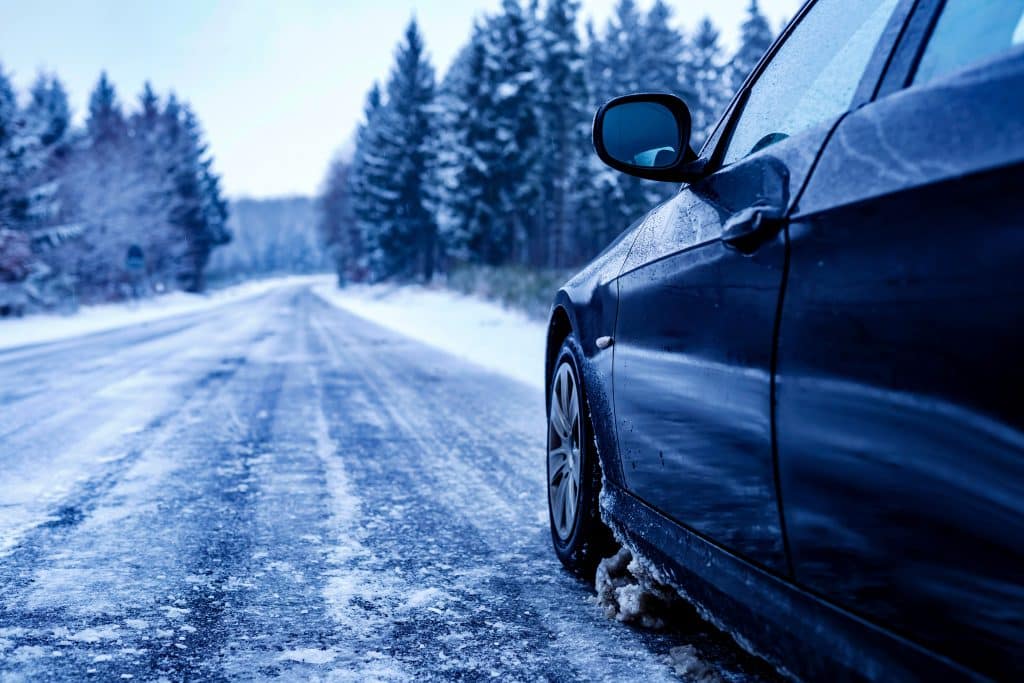
Naturally, in an emergency braking situation, you won’t have time to think about that and you’ll stamp on the pedal. The ABS will do its job and prevent the wheels from locking up, which eases things quite a lot. In cars without ABS, you’ll need some skills.
I’ve driven my Corolla on snow in a manner that the car was never meant to be driven and learning the brake got me out of some messy situations. Instinctively, we want to stomp the brake pedal and hope for the best. In cars without ABS this process is called “turning your car into a sled”.
The wheels will lock up and they won’t turn, so you won’t have steering and the tires will drag into the snow. To be fair, the car will stop eventually, but it won’t be as short as you may hope. Therefore, it’s important to have a feel for how the car brakes. As soon as you notice the wheels locking up, ease off the brake a bit and modulate it to get the best stopping power. In the world of racing, this is called threshold braking, so there’s a learning curve here.
Accelerating
Braking is one part of the story, but you’ll also need to accelerate. Similar to all the other inputs, when you’re accelerating, you’ll need to be smooth with the gas pedal. It may look fun to floor it, but the driven wheels will slip and you’ll get nowhere fast.
With other cars, you’ll need to be very gentle with the gas to avoid any slip. As the tires spin without the car moving, you’re turning the unpacked snow into a packed one. Even winter tires may struggle a bit to get traction as the surface is smooth.
Steering
Even though I left the steering last, it’s not the least important aspect. When you’re driving on a dry road, any kind of input through the steering wheel is fine and the car will follow your commands. Sure, there will be some variations depending on the type of tires you use, but in general, you shouldn’t have too many issues. With snow, things are a bit different.
Sudden inputs through the steering wheel will translate into nothing with the car. It will continue going straight, regardless of the angle of the steering wheel. To eliminate this issue, add the steering inputs gradually and get a feel for how much the car is turning.
If you notice the car isn’t changing direction, straighten up the steering wheel and then continue adding angle to it gradually. That way, the tires will bite into something, and the car will start to turn.
Different Drivetrains on Snow
There are cars with front, rear, or all-wheel drive, all of which will behave differently on the snow. This is regardless if we’re talking about driving on shallow or deep snow. Since I cannot go into every car on the market, I’ll have to talk generally for each drivetrain.
I’ve had the luck of driving all types on snow and I can say that cars with all wheel drive are better on the snow. Putting the power to all 4 wheels is better than sending the power to 2, so you have many advantages. Less torque goes to each wheel, resulting in less wheel spin. Also, all 4 wheels will be responsible for the traction, so the chances of getting stuck are reduced.
Even if you get stuck, depending on the system, you’re more likely to get out easily. Having power on all 4 wheels is better than having just 2, so the car will put the power down more evenly.
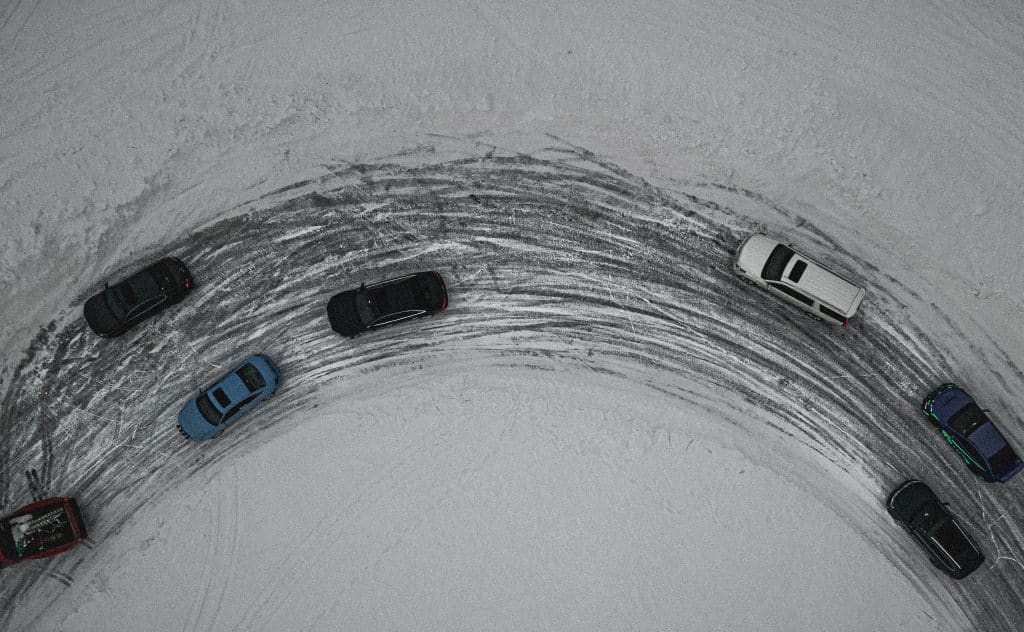
For front and rear wheel drive cars, things are very different. Both have different pros and cons, so this is something that you’ll have to work with based on the car you have. There are situations where one will be better than the other, and the other way around.
On a flat surface, FWD cars are a slightly better at accelerating from a rest because the weight of the engine pushes the tires down, resulting in better traction. With RWD car, you don’t have as much weight over the rear wheels, so it can slip a bit more. It’s important to note that regardless of the car, you’ll still need to be gentle with it.
A friend of mine got his FWD car stuck on an incline, so 2 of us had to sit on the hood to get him going. My RWD IS250 on the other hand, didn’t have as much problems with it.
With that said, a RWD car will have a bit of an advantage on an incline. With most cars, the engine is on the front, and even though it adds weight on the front wheels, the overall weight is slightly shifted towards the rear. It’s not a massive difference, but enough to notice it. A RWD car will have more weight over the driven wheels, so it won’t struggle for traction.
A useful tip for RWD cars on snow is adding weight to the back. Regardless of the position you’re stuck, it’s important for the wheels to dig in and the best way to do it is with weight. You can sit 3 people in the back, throw in heavy rocks in the boot, whatever you can think of in that situation. You’ll need to be creative.
There isn’t a good or bad drivetrain for snowy conditions. All have their pros and cons, but cars with 4WD or AWD do better in these situations.
Using the Electronics
I’m going to assume most of you reading this have cars that aren’t older than the Internet, so you’ll have some electronic components to help out here. In a previous section I covered the ABS, so I’ll just remind you – it’s a very nice feature to have, especially when driving on snow.
Some newer cars have snow modes, which makes the throttle input a bit more sluggish. You’ll find this with cars equipped with throttle by wire where the computer determines how much you press the gas pedal and it will act accordingly. If you know your car well, you can drive it with the normal mode, but if you’re not sure, stick it into snow mode and still be gentle until you get the hang of how things go.
The idea is to make the car less responsive, reducing the chances of wheel slip. All manufacturers are doing this differently, but the result is the same. The car may cut the power down, make the gas less responsive, keep the transmission in the highest gear possible (in automatic cars) and may other tricks.
Finally, let’s talk about something that few people are doing in these situations – traction control. The most normal response to this is to keep it on, which is a wise choice if you’re driving normally and don’t experience any issues. With that said, the problem happens once you lose grip or get stuck.
The traction control works by looking at the wheels and determining if there’s any wheel spin. In these situations, it will either start applying the brakes on the wheel with the most slip or cut the power or do some other witchcraft.
Accelerating on an incline or trying to get out of a stuck situation with the traction control on will be a struggle. The car will constantly try to cut the power and you’ll often remain stationary. I’ve tested this out on my IS250 a few weeks ago and as much as the system works, in these situations, it can be problematic.
With all the systems on, the car would spin up the rear wheels and then it would start cutting power. It felt more like a struggle than me trying to get out. Turning off the system enabled me to accelerate without too much problems. Sure, there was wheel spin, something I managed by modulating the throttle.
I know that not all cars allow you to turn off the system, but if yours does, you may have more luck getting out without it.
Learning how to Drive on Snow
I could get a lot of hate for this, but my winter driving experience relies on empty parking lots and many gallons of fuel spent. As soon as it snows, I find a large enough open space with no cars of people and start experimenting with the car. Testing its limits and finding out what it’s capable of. I know it’s not the best way, but it’s the only one that’s available to me. I’d rather do that, than risk driving on snow not knowing how my car would behave and what to do.
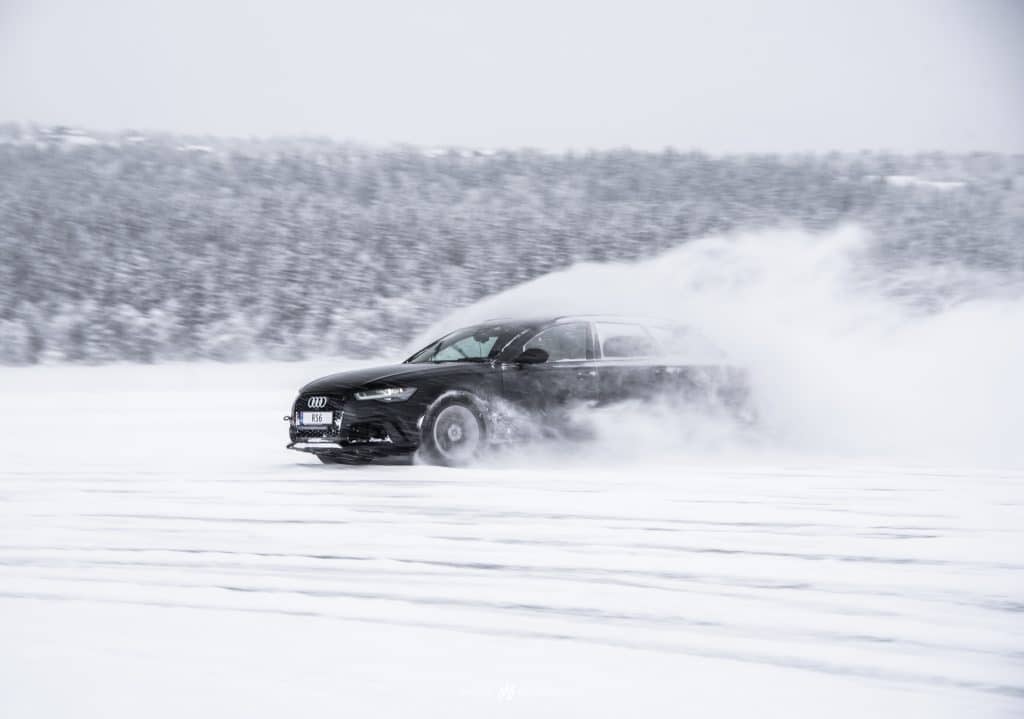
There are winter driving schools where you pay to drive with an instructor. Here you’ll rely on the inputs from a professional to explain to you how to drive in these trickery conditions. You’ll learn a lot more in a shorter time and it’s considered safer.
Driving on Ice
If you think that driving on snow is difficult, ice is even worse. The smooth and slippery surface makes it difficult for the tires to bite in and deliver traction. There are some tires on the market that can be considered acceptable, but they’re far from “excellent” for these conditions.
The only way to get good traction on ice is with studdable tires or snow chains. Both have their pros and cons and the studdable tires are the better performers overall. With that said, fitting the studs at the side of the road isn’t the most practical thing, which is why the chains are the preferred option. They offer decent performance and are easier to install.
Conclusion
Winter conditions are tricky for any car. We can praise the tires as much as we want, but they won’t offer the same levels of performance as they do on dry roads. As far as driving under these conditions, you have multiple options, depending on the road ahead.
I know many people that rarely see snow and they often have issues when they go on a trip in a snowy area. They would rely on all-season or all-weather tires, which is fine until the conditions become harsher. Therefore, I always recommend having the appropriate winter equipment.
As far as the driving is concerned, don’t try to impress the other drivers on the road. Be sensible and take things easy. This will prevent any potential risks of a crash or getting stuck. If you’re not too confident that you can pull it off, you can always try to learn. There are multiple ways to do so which can help you in real situations.
